| Pinctada radiata (Leach, 1814) |
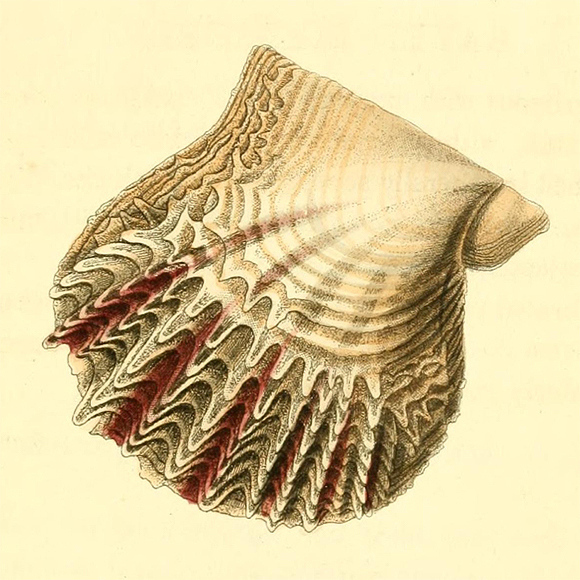 |
Worldwide warm seas, including the whole Mediterrranean; also in Azores and in the English Channel. Shallow water to 30m deep, attached to various supports, and often in clusters.
Original taxon: Avicula radiata.
Synonyms: nebulosa, pallida, vulgaris…
Above: the species in W. E. Leach: Zoological miscellany: being descriptions of new or interesting animals vol. 1, London 1814, pl.43. |
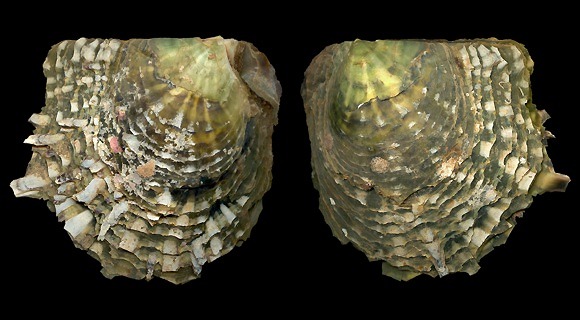 |
The extreme variability in the morphology of the species led to some misidentifications; see Garzia & al., 2024.
5m deep, Ligaria bay, Heraklion area, N. Crete. 54mm. |
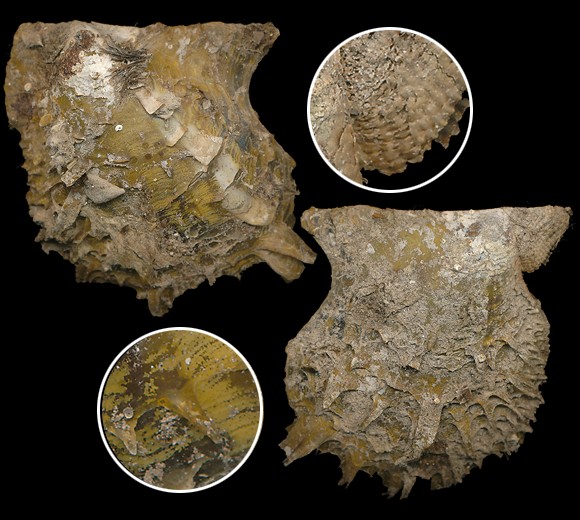 |
| In nets of fishermen, port of Sidi Jussef, Kerkennah island, Tunisia. 44mm. |
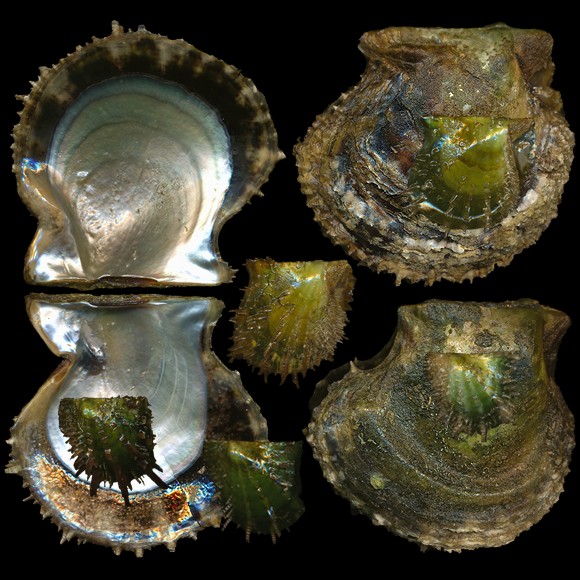 |
| Above and below: 1-8m deep, on stones, dead shells, or on large Pinna nobilis, SE. corner of Elounda bay, Kolpos Mirabellou, Lasithi, Crete. 30-105mm. |
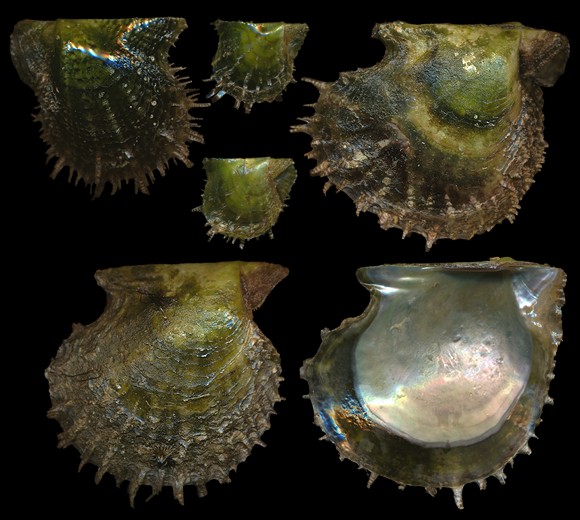 |
| The local water is extremely rich in organic particles. Filtering shells (Arcidae, Limidae, Pinnidae, Pteriidae) reach here impressive sizes. |
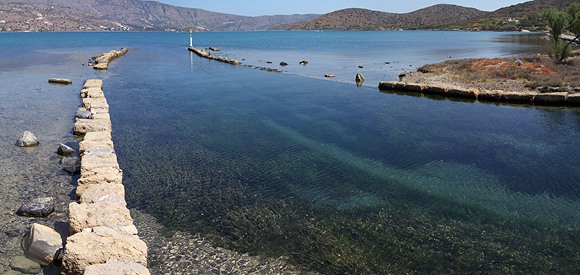 |
Posidonia field in Elounda channel.
All this sheltered area hosts beautiful specimens. |
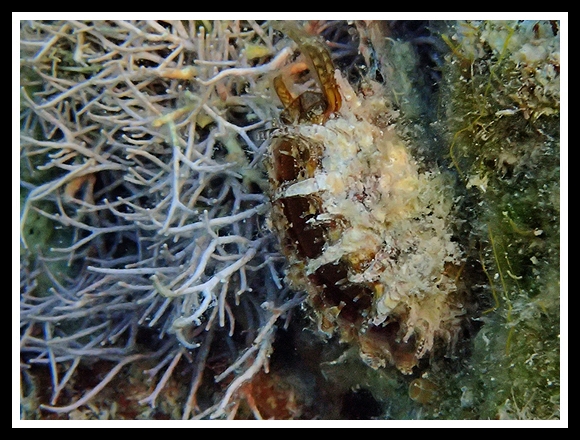 |
| On rocky wall near the shore, south of Agios Prokópios, Palaiókastro area, south of Epidaurus Limera Province, SE. Peloponnese, S. Greece. Original picture provided by katerinakalogerini for iNaturalist – (CC BY-NC). |
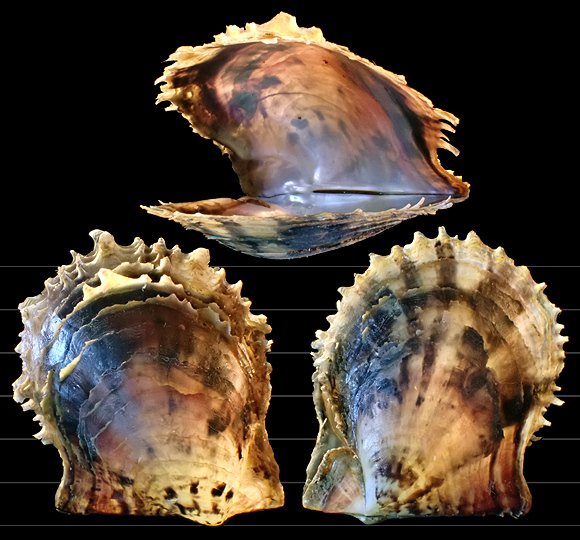 |
« Shell griseous with purplish rays. Epidermis concentrically elevated, with processes arranged into radiating lines. This shell is generally supposed to inhabit the West-Indian Seas, but I have not been able to ascertain the truth of this conjecture. The elevated processes of the epidermis, on close examination, seem to be membranaceous, with fine concentric rings of shelly matter deposited on them. » – W. E. Leach: Zoological miscellany p.98. This text shows how risky it is to rely on patterns and colours to make a good description. Here, the purplish rays on a griseous background become blackish rays on a yellowish background. Hopefully, the radially arranged scales are a constant; the species name, based on these alignments, is then resistant to morphological variability.
8m deep, Vouliagmeni area, Attikí, SE. Greece. 65mm. |
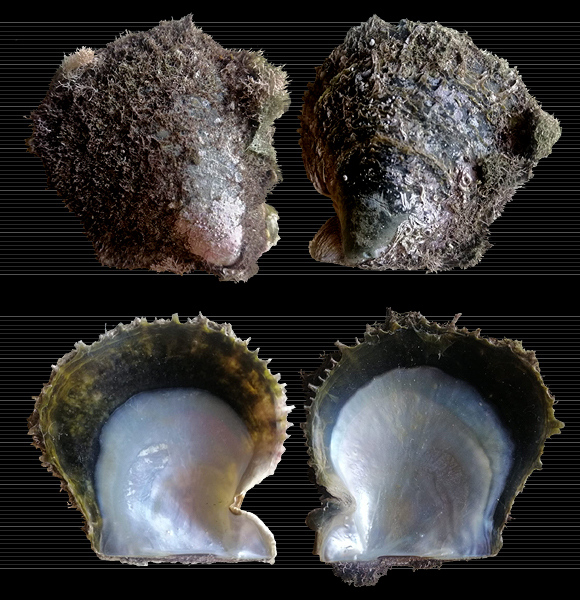 |
2m deep, on rocks, Banac beach, Luka Cavtat, S. Croatia. 6cm. Original pictures provided by I. Miljan Popović (HR).
– (CC BY-NC-SA) – |
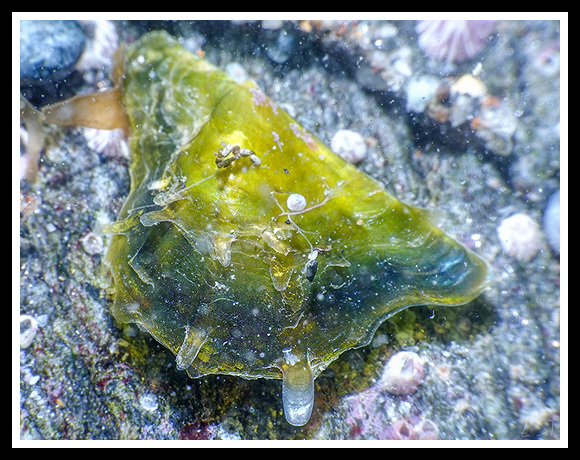 |
| Shallow water, Punta de la Mona, west of Almuñécar, Granada, Andalucia, S. Spain. Original pictures provided by I. Nestares (ES) – (CC BY-NC-SA). |









